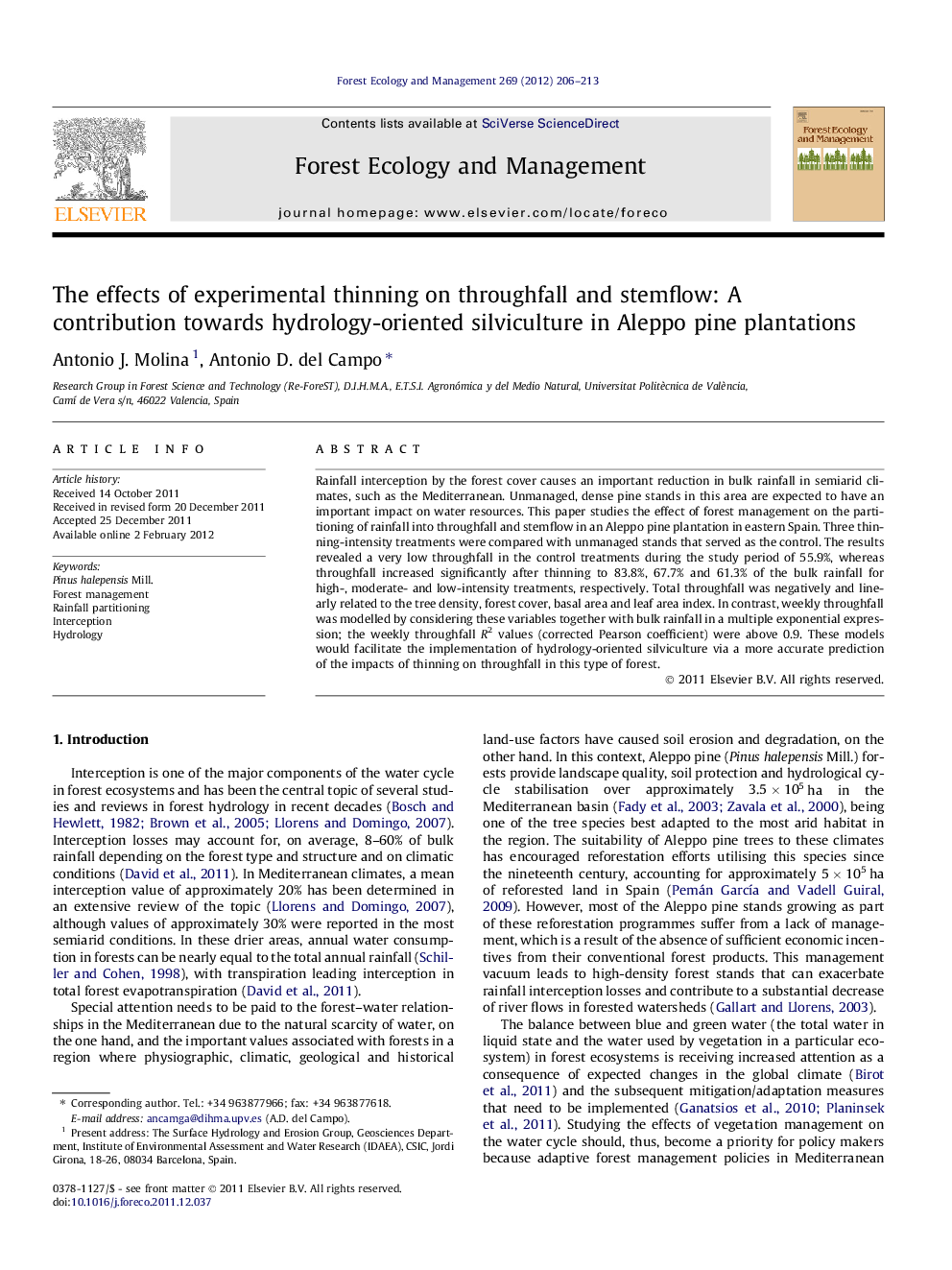| Article ID | Journal | Published Year | Pages | File Type |
|---|---|---|---|---|
| 87457 | Forest Ecology and Management | 2012 | 8 Pages |
Rainfall interception by the forest cover causes an important reduction in bulk rainfall in semiarid climates, such as the Mediterranean. Unmanaged, dense pine stands in this area are expected to have an important impact on water resources. This paper studies the effect of forest management on the partitioning of rainfall into throughfall and stemflow in an Aleppo pine plantation in eastern Spain. Three thinning-intensity treatments were compared with unmanaged stands that served as the control. The results revealed a very low throughfall in the control treatments during the study period of 55.9%, whereas throughfall increased significantly after thinning to 83.8%, 67.7% and 61.3% of the bulk rainfall for high-, moderate- and low-intensity treatments, respectively. Total throughfall was negatively and linearly related to the tree density, forest cover, basal area and leaf area index. In contrast, weekly throughfall was modelled by considering these variables together with bulk rainfall in a multiple exponential expression; the weekly throughfall R2 values (corrected Pearson coefficient) were above 0.9. These models would facilitate the implementation of hydrology-oriented silviculture via a more accurate prediction of the impacts of thinning on throughfall in this type of forest.
► Hydrology effects of experimental thinning in a dense Aleppo pine plantation were examined. ► Thinning intensity treatments (low, moderate and high) have been established. ► Throughfall and stemflow were both modified after thinning. Low intensity thinning did not have a significant effect. ► Models were developed to allow foresters to easily implement a “hydrology-oriented silviculture”.
